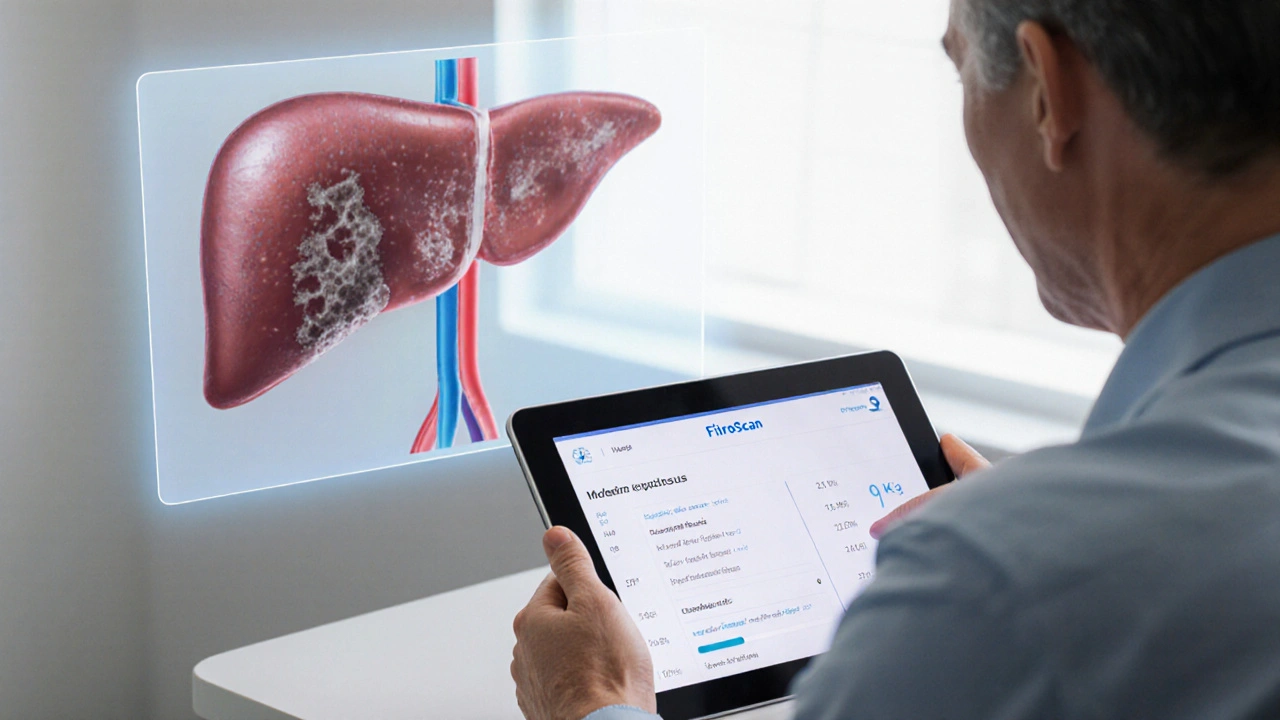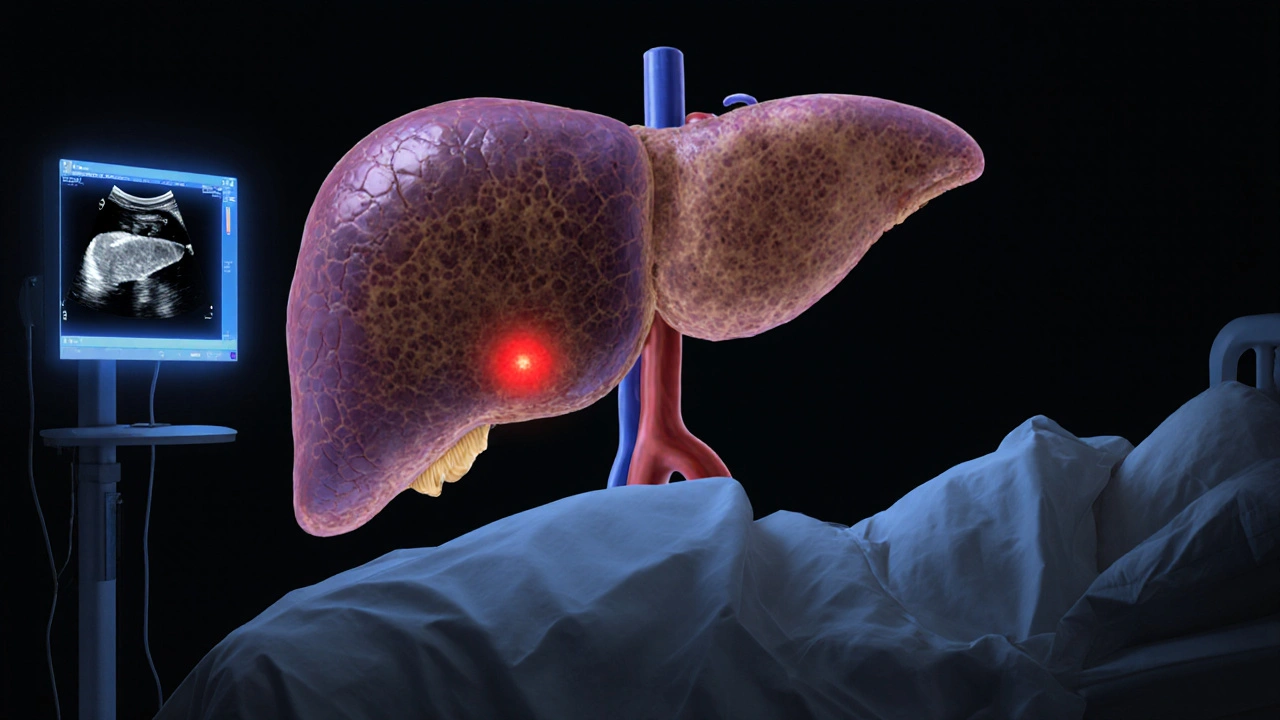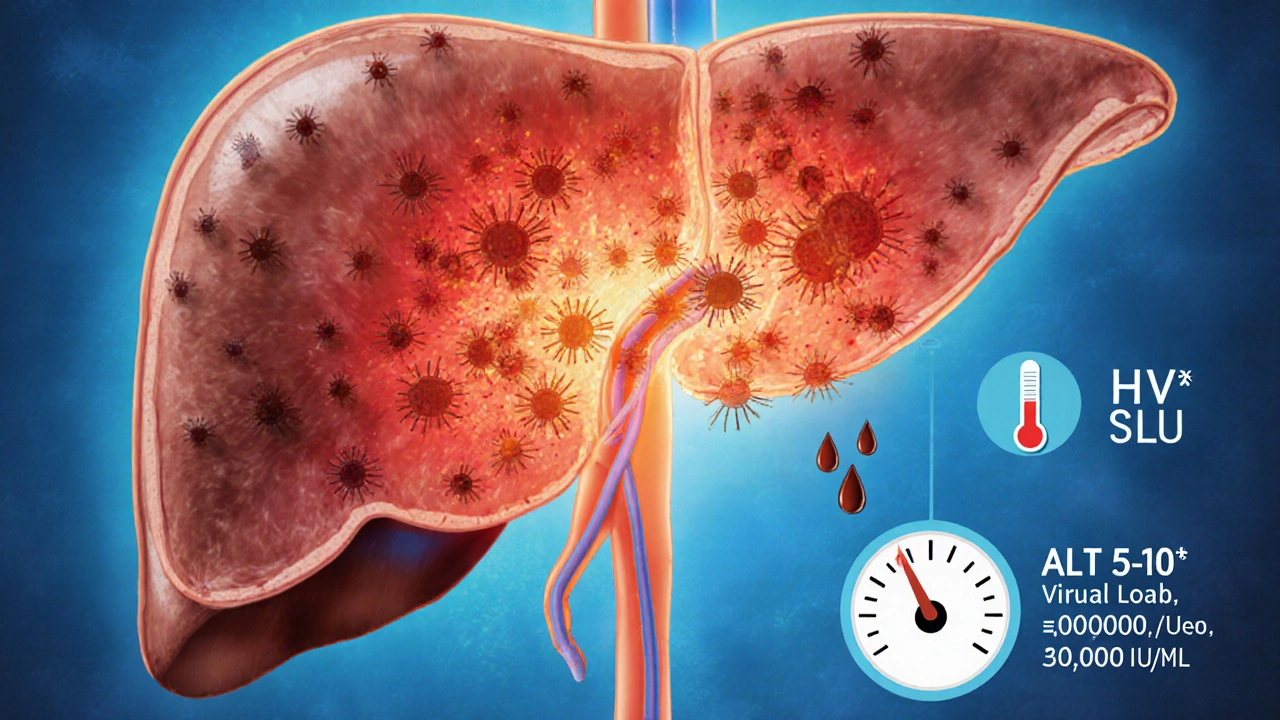Hepatitis C Stage Assessment Tool
This tool is for educational purposes only. It does not replace professional medical advice. Always consult your healthcare provider for diagnosis and treatment.
Step 1: Select Your Symptoms
Step 2: Enter Your Lab Results
When talking about Hepatitis C is a viral infection caused by the hepatitis C virus (HCV) that mainly targets the liver, the first question most people have is: how does the disease move from an initial infection to serious liver damage? Knowing the hepatitis C stages helps you spot warning signs, plan medical visits, and understand when treatment can halt or even reverse damage.
Why the Disease Is Divided into Stages
Doctors split the illness into clear phases because each phase shows a distinct pattern of virus activity, liver response, and risk of complications. This staging also guides testing frequency, lifestyle advice, and the choice of medication. Think of it as a roadmap - you can’t reach the next checkpoint without knowing where you are now.
Stage 1 - Acute Hepatitis C Infection
Acute Hepatitis C covers the first 6‑12 weeks after the virus enters the bloodstream, usually through contaminated blood or unsafe medical procedures. Most people feel fine, but about 30% develop flu‑like symptoms: low‑grade fever, fatigue, dark urine, and a mild right‑upper‑abdomen ache.
- Lab clue: ALT (alanine aminotransferase) can jump 5‑10× the normal limit.
- Viral load: very high, often >1,000,000 IU/mL.
- Outcome: 15‑25% clear the virus spontaneously; the rest move to chronic infection.
If you suspect acute infection, a PCR test for HCV RNA confirms the virus, while an antibody test indicates exposure. Early diagnosis matters because starting treatment during the acute phase can boost cure rates and may prevent chronic disease.
Stage 2 - Early Chronic Infection (Months1‑5Years)
When the virus persists beyond six months, it becomes Chronic Hepatitis C. In the early years, liver inflammation is still active, but the organ often compensates, so many feel perfectly normal.
- Typical ALT/AST: mildly elevated, often 1‑2× normal.
- Liver biopsy or FibroScan: usually shows Metavir F0‑F1 fibrosis (no or minimal scarring).
- Symptoms: intermittent fatigue, occasional abdominal discomfort.
During this window, modern Direct‑acting antivirals (DAAs) can achieve a cure (sustained virologic response) in over 95% of cases with an 8‑12‑week regimen. Starting treatment now prevents the liver from slipping into irreversible damage.

Stage 3 - Moderate Fibrosis (Years5‑15)
As the virus continues to irritate liver cells, scar tissue builds up. This stage is usually classified as MetavirF2‑F3 fibrosis, or “moderate fibrosis.” The liver still works, but the scar network thickens, slowing blood flow.
- Non‑invasive score: FibroScan values rise to 7‑12kPa.
- Lab trends: ALT may settle back to near‑normal, but platelet count can start to drop.
- Symptoms: increased fatigue, mild swelling in ankles, occasional bruising.
Even at this point, DAAs remain highly effective. However, doctors also begin to monitor for portal hypertension and may advise dietary changes-low‑salt meals, avoiding alcohol, and maintaining a healthy weight to reduce further scarring.
Stage 4 - Cirrhosis (Advanced Scarring)
When fibrosis reaches MetavirF4, the liver is considered cirrhotic. The organ’s architecture is reshaped into nodules surrounded by scar tissue, drastically impairing function.
- Imaging: ultrasound shows nodular liver surface; FibroScan >12kPa.
- Complications: ascites, variceal bleeding, hepatic encephalopathy, and a higher risk of hepatocellular carcinoma (HCC).
- Lab markers: low albumin, prolonged INR, reduced platelet count, elevated bilirubin.
Even with cirrhosis, a cure is possible if the virus is cleared before decompensation. Successful DAA therapy can halt further scar formation and, in some cases, shrink existing nodules.
Stage 5 - Decompensated Cirrhosis & Liver Cancer
If cirrhosis progresses without viral suppression, the liver may fail to perform essential tasks. Patients can develop fluid‑filled abdomen (ascites), jaundice, or life‑threatening bleeding from esophageal varices.
- HCC screening: ultrasound every six months, with AFP (alpha‑fetoprotein) blood test.
- Treatment options: liver transplant (for eligible patients), trans‑arterial chemo‑embolization (TACE), or systemic therapies for advanced cancer.
- Quality of life: palliative care, nutrition support, and careful medication management become priorities.
Although the virus can still be eradicated, the benefit shifts from reversing damage to preventing new lesions and improving survival post‑transplant.
Quick Reference Table - From Infection to End‑Stage
| Stage | Typical Duration | Fibrosis Level (Metavir) | Common Lab Signs | Main Symptoms | Recommended Action |
|---|---|---|---|---|---|
| Acute Infection | 0‑6weeks | F0 | ALT>5×ULN, HCVRNAhigh | Fever, fatigue, dark urine | PCR test, consider early DAA |
| Early Chronic | 6weeks‑5years | F0‑F1 | ALT mildly ↑, normal platelets | Often asymptomatic | Standard 8‑12week DAA regimen |
| Moderate Fibrosis | 5‑15years | F2‑F3 | Platelet drop, FibroScan7‑12kPa | Fatigue, ankle swelling | DAA + lifestyle counseling |
| Cirrhosis (Compensated) | Varies, often >15years | F4 | Low albumin, high INR, FibroScan>12kPa | Ascitesrare, mild jaundice | DAA, regular imaging, manage portal pressure |
| Decompensated / HCC | Depends on disease control | F4‑advanced | Elevated bilirubin, severe thrombocytopenia | Ascites, encephalopathy, variceal bleed | Transplant evaluation, HCC surveillance, palliative care |

How to Track Your Progress
Regular monitoring turns uncertainty into actionable data. Here’s a simple checklist you can discuss with your hepatologist:
- Every 6‑12months: HCV RNA PCR to confirm viral clearance.
- Annually: FibroScan or repeat liver biopsy if non‑invasive scores rise.
- Every 6months (if cirrhotic): ultrasound + AFP for early HCC detection.
- Monthly: keep a symptom diary - note new fatigue, swelling, or changes in mental clarity.
- Dietary log: track alcohol intake, sugary drinks, and weight changes.
Putting numbers on your condition helps you and your doctor decide when to speed up treatment or when to add supportive therapies.
Common Myths About the Stages
Myth 1: “If I feel fine, the virus isn’t hurting me.” Reality: The liver can sustain serious injury silently; fibrosis can progress for years before symptoms appear.
Myth 2: “Once I’m cirrhotic, cure is impossible.” Reality: DAAs still achieve >95% cure even in compensated cirrhosis; the goal shifts to preventing further decline.
Myth 3: “I can stop medication once my ALT normalizes.” Reality: ALT is just one marker. The virus may still replicate; only a negative PCR after treatment confirms cure.
What Happens After a Cure?
Achieving a sustained virologic response (SVR) is game‑changing. Most lab values improve within six months, and the risk of liver cancer drops dramatically-by about 70% in non‑cirrhotic patients and 50% in those with compensated cirrhosis. However, existing scar tissue doesn’t disappear overnight. Ongoing surveillance is still advised for anyone who ever reached cirrhosis.
Frequently Asked Questions
Can hepatitis C be caught again after I’m cured?
Yes. A cure eliminates the current virus but does not provide immunity. Practicing safe injection techniques and avoiding contaminated blood are still essential.
How long does it take for liver fibrosis to reverse?
If the virus is cleared early (within the first decade), studies show measurable FibroScan improvement within 1‑2years. In advanced cirrhosis, regression is slower and may plateau, but the risk of complications still drops.
Do I still need liver cancer screening after SVR?
If you never developed cirrhosis, most guidelines stop HCC screening after a confirmed cure. If you had cirrhosis, continue six‑monthly ultrasounds for at least 5years, then follow your doctor’s advice.
Is alcohol completely forbidden after treatment?
Alcohol accelerates fibrosis. If your liver is still fibrotic or cirrhotic, abstinence is strongly recommended. In early stages, limited, occasional intake may be okay, but always discuss with your clinician.
What tests confirm I’m virus‑free?
A quantitative HCV RNA PCR performed 12 weeks after finishing therapy (SVR12) is the gold standard. Some labs also run an HCV antibody test, but a negative PCR is the definitive proof.
Understanding each phase of hepatitis C puts you in the driver’s seat. Whether you’re just diagnosed, navigating a chronic journey, or recovering after a cure, the roadmap above tells you what to watch for, when to act, and how to keep your liver as healthy as possible.


Tiarna Mitchell-Heath
October 14, 2025 AT 21:49Your post glosses over how risky the early stage really is, get real.
Katie Jenkins
October 23, 2025 AT 11:49First off, the staging breakdown is spot‑on, but the devil’s in the details when it comes to monitoring. You need to get a FibroScan at least once a year once you hit moderate fibrosis, otherwise you’re flying blind. Also, don’t be fooled by a \"normal\" ALT; the virus can still be humming along under the radar. The guidelines actually recommend a baseline HCV RNA PCR even if you feel fine, because early detection saves you from years of silent scarring. And remember, the newer DAAs aren’t just a miracle pill; adherence matters, so setting up reminders can make the difference between SVR and relapse.
Roger Wing
November 1, 2025 AT 01:49People act like you need a scan every month, but the data shows most stable patients won’t progress without a clear trigger. So spending cash on endless imaging is just a hustle.
Alison Poteracke
November 9, 2025 AT 15:49Whoa, hold up! It’s easy to get fired up, but the early stage can be a blind spot for many. If you catch it early, lifestyle tweaks and prompt treatment can totally turn the tide. Keep the conversation rolling and remember you’re not alone in this fight.
Marianne Wilson
November 18, 2025 AT 05:49Honestly, it’s maddening how some folks ignore basic diet changes while obsessing over fancy labs. If you’re not cutting back on booze and sugar, no amount of scans will save you from the inevitable fibrosis. Moral of the story: discipline beats diagnostics every time.
Patricia Bokern
November 26, 2025 AT 19:49When I first heard about hepatitis C, I thought it was just another headline, until a close friend was diagnosed and it turned my world upside down. The panic that hit the room was palpable, and I could see the fear in her eyes as doctors talked about \"fibrosis\" and \"cirrhosis\". She told me she had been feeling tired for months, but she brushed it off as just work stress. Then the swelling in her ankles appeared, and the doctor said \"we need to act now or you risk irreversible damage\". The whole family gathered, crying, praying, and demanding the best possible treatment. We learned that the virus can stay silent for years, hiding behind normal lab values, waiting to strike when you least expect it. When the first round of DAAs was prescribed, hope surged like a tide, but the side effects and the financial burden loomed like dark clouds. Every appointment felt like a battlefield, with insurance denials and endless paperwork. Yet, each tiny improvement-lowered bilirubin, a slight rise in platelet count-felt like a personal victory. I watched my friend document every symptom, every lab result, turning pain into data, and that data became her armor. The turning point came when a follow‑up FibroScan showed a drop from 15 kPa to 9 kPa, signaling that the scar tissue was actually receding. She started smiling again, laughing at jokes, and even planning a trip she thought she’d never take. This journey taught me that knowledge is power, but compassion is the fuel that keeps you moving forward. If you ever find yourself in this maze, cling to the facts, lean on your support crew, and never underestimate the power of a good night’s sleep. The road is long, the stakes are high, but surviving hepatitis C is absolutely possible with the right mindset and relentless advocacy.
Garrett Gonzales
December 5, 2025 AT 09:49Great story, and the numbers back it up: recent real‑world studies show SVR rates over 95 % even in patients with F3‑F4 fibrosis, and FibroScan reductions of 2‑4 kPa are common after a successful DAA course. Adding a low‑salt diet and regular aerobic exercise can further accelerate regression of scar tissue. Keep pushing those labs, and don’t let insurance hassles stall the cure.
Aman Deep
December 13, 2025 AT 23:49That’s solid data, and it reminds us that medicine is as much art as science-balancing numbers with patient hope. 🌈 Stay optimistic, the liver loves a good reboot.